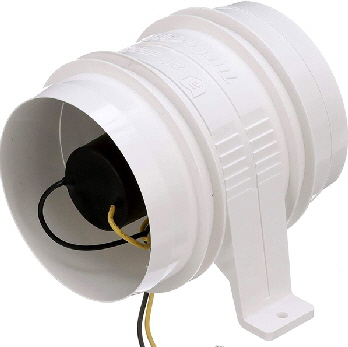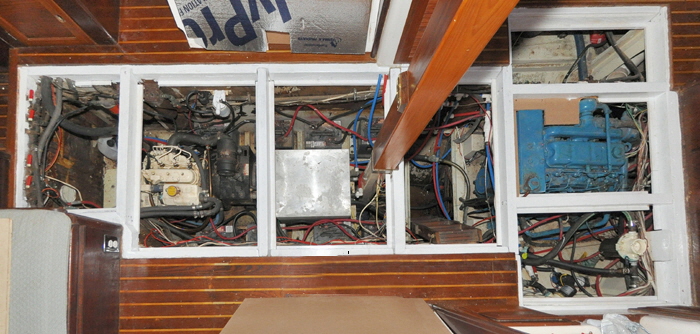 The term “engine room” is a bit misleading on Britannia because the area is 26’ feet long, from the forward saloon bulkhead to the stern gland. It is also 4’6” inches down to the bottom of the bilge.
The term “engine room” is a bit misleading on Britannia because the area is 26’ feet long, from the forward saloon bulkhead to the stern gland. It is also 4’6” inches down to the bottom of the bilge. 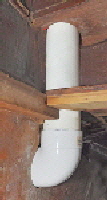 This cavernous area doesn't just contain the large Perkins 4-236 main engine, but all the other machinery that runs the boat, including a diesel generator, a 22 gallon water heater, nine batteries, a large battery charger and five electric pumps. All these are in what I call the “equipment bay.” When everything is humming, and especially when both the generator and main engine are running together a lot of heat is generated below the floors,
This cavernous area doesn't just contain the large Perkins 4-236 main engine, but all the other machinery that runs the boat, including a diesel generator, a 22 gallon water heater, nine batteries, a large battery charger and five electric pumps. All these are in what I call the “equipment bay.” When everything is humming, and especially when both the generator and main engine are running together a lot of heat is generated below the floors,

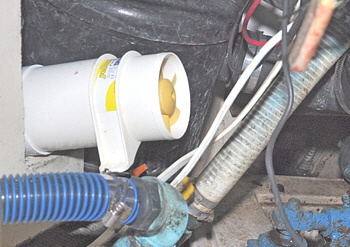 Two Attwood 1749-4 Turbo 4000 blowers inject outside air into the front fo the bay and draw it out at the stern. At the inflow end of the equipment bay cold air is drawing in using a 90° degree bend directed straight on to the generator motor.
Two Attwood 1749-4 Turbo 4000 blowers inject outside air into the front fo the bay and draw it out at the stern. At the inflow end of the equipment bay cold air is drawing in using a 90° degree bend directed straight on to the generator motor.
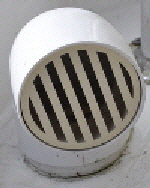 The rear fan is next to the main engine, to suck the maximum amount of hot air out. Tunking is routed to the back of the boat, and up to the aft deck usimg a 90° degree bend and grating to act as a cowl. A cap keeps rain out when we were not using the blowers.
The rear fan is next to the main engine, to suck the maximum amount of hot air out. Tunking is routed to the back of the boat, and up to the aft deck usimg a 90° degree bend and grating to act as a cowl. A cap keeps rain out when we were not using the blowers.
The fans also remove engine odor that would normally congregate in the equipment bay. the fans can be switched on when arriving at the boat to remove that “closed up boat smell,” quicker.
